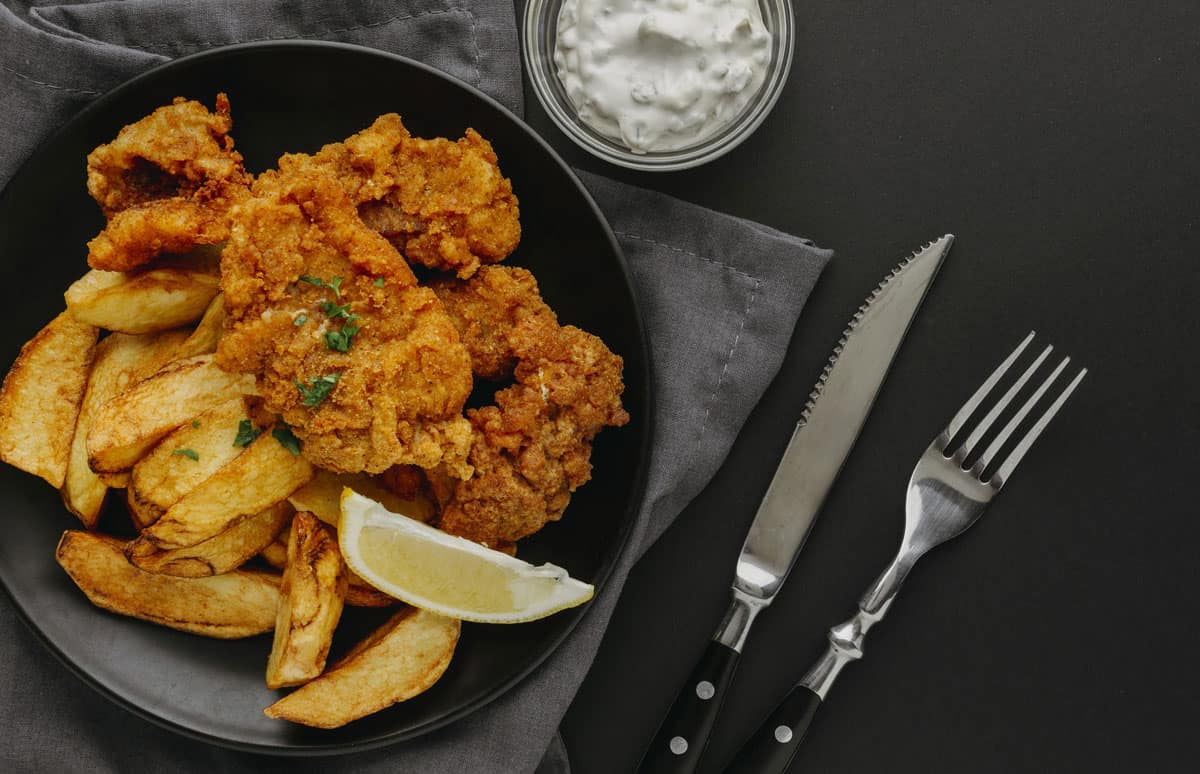One fryer is not worth the other. So, how to orient yourself when it comes to buying one? How do you choose a deep fryer and how does it work?
Take this article as a useful map to guide you in choosing the fryer that best suits your needs. There are fryers and deep fryers, electric and gas, oil or air, with double or single basket, for kitchen or bar counter. One fryer is not worth the other, here. It is important to have a clear idea of the use you want to make of it and also, why not, know a little about its components to appreciate its functions and accessories.
The deep fryer: how do you choose and how does it work?
The deep fryer, as the term tells us, fries food and can do it at different temperatures depending on the type of food and preparation. A professional fryer, unlike that for domestic use, it has the advantage of allowing large quantities of food to be cooked in a very short time and with minimal effort. But which fryer to choose?
The result should be crispy fried, as less greasy as possible, with a uniform color. This is possible thanks to machines that allow perfect control of the temperature, which should rise from 0 to 110 degrees in a stable way and then by one degree every three seconds evenly. The temperature of use is between 140 degrees for slow frying and 190 when you want the crust to form, as for potatoes. For the breaded ones, however, the ideal is 150 degrees.
In the case of mainly floured fry, on the other hand, it is advisable to buy a fryer with flame tubes if it is gas; with internal resistances, in the electric version. This is because the flour does not settle and burn the oil prematurely.
The material of the machinery is AISI 304 stainless steel and the thickness of the top varies from 10/12 mm to 10/20 mm. The fryers can be built-in, installed on an open or closed compartment and also on the counter of a bar or a van for street food. The solutions are, also in this case, many.
When we say frying we say oil, but by now we know that this is not the case. The traditional fryer is oil-based but now those that cook thanks to hot air are also very popular, in this case we speak of forced convection cooking. These machines, however, are still very little widespread and experienced on a professional level.
THE COMPONENTS OF THE FRYER
Knob to adjust the temperature of the fryer. A fundamental element because, as we have seen, the right temperature is the key to a successful frying. The temperature can be adjusted between 110 and 190 degrees, using it is simple and safe thanks to the protection from high water like an IPX5 and the controls on the dashboards.
Fryer safety thermostat. As we said, temperature regulation and its constancy are fundamental in frying. The thermostat, digital or mechanical, avoids the risk of oil overheating. This must be reset if the machine is started without contents and avoids serious damage to the appliance.
Fryer tub and baskets. In the fryer the tank can be single or double, in any case the internal corners are rounded to facilitate cleaning.
The models can have a single tank or two tanks; the latter allow you to fry different foods without contamination, neither of flavors nor odors or particles. For example, you can fry foods for celiacs in one tub and foods with gluten in the other without causing problems. In these models, however, there are separate controls and independent lifting at the end of cooking.
The baskets are easily washable: they can be removed from the tub and placed in the dishwasher. They have the typical mesh grooves that, from time to time, are also seen on food to prevent dirt from sticking. In deep fryers, unlike in professional pasta cookers, the basket is always included. However, different submultiples and combinations can be chosen as options.
Fryer oil filter system. The oil and its quality are important components for the success of a good frying. For this reason, some fryers have an oil filtering system that filters it automatically and then re-enters it into the tank ready for use again. These are complex machines for medium-large users. Simpler systems, such as steel and paper filters, still allow you to remove and stop the particles contained in the tank, then clean the used oil and use it again for frying with the same quality.
Fryer drain cock. It is that part of the fryer that allows the oil to be discharged into a container placed under the machine, through a valve. In the bench models, the discharge takes place through a curved duct and the oil ends up in a container. The disposal, then, takes place through the transfer to the municipal landfill. Some professional brands have a basin underneath already included and the tap is an optional.
Fryer models
Electric fryers. They work through coil resistances that heat the oil placed inside a tank and keep its temperature constant and can then be moved during the washing of the machine. The self-extractor hood is required as for the gas models which are usually preferred for the lower running costs.
Gas fryers. The oil is heated thanks to gas burners, called tubular burners due to their shape, placed inside the cooking tank. The constancy of the temperature is guaranteed by thermostats in contact with the oil which turn off the burners once the temperature is reached and give the ignition signal when it starts to drop. The most common models are those with the burner inside the tank and mechanical controls, but there are also some with burners inserted in tubes and are called with clean tank. These types are more expensive and suitable for those who make a lot of floured products. If LPG is still used, it is always advisable to report it at the time of purchase because the nozzles mounted to make the machine work correctly will have holes of different sizes from the natural gas ones.
In addition to the classic fryers for counter or full module catering, electric or gas, with one or two wells, there are two particular types.
Pastry fryers. They are different from those of catering, not for the functioning but only for the measures that generally approach the 40X60 cm trays. They have tanks and modularity in their own right with respect to classic gastronorm.
Translated or movable basket fryers. Canteens and large users or industries use this kind of machines, which can even reach 80 liters per tank and avoid the operator the trouble of lifting the basket and managing heavy weights.
-
 Induction fryer with 2 8-litre tanks FRI2X8-IND950,00 € Euro VAT excluded
Induction fryer with 2 8-litre tanks FRI2X8-IND950,00 € Euro VAT excluded -
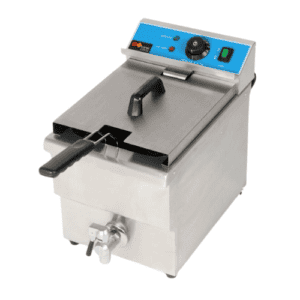 FRI8-WT 8 liter electric fryer300,00 € Euro VAT excluded
FRI8-WT 8 liter electric fryer300,00 € Euro VAT excluded -
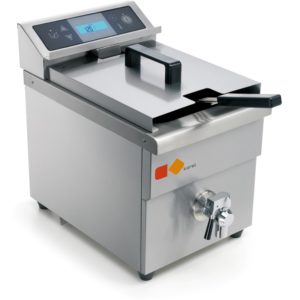 Professional induction fryer Cod. FRI8S-IND519,00 € Euro VAT excluded
Professional induction fryer Cod. FRI8S-IND519,00 € Euro VAT excluded -
 FRI2X8-WT 2-well 8-litre countertop fryer958,00 € Euro VAT excluded
FRI2X8-WT 2-well 8-litre countertop fryer958,00 € Euro VAT excluded -
 Fryer 8 liters FRI8-IND513,00 € Euro VAT excluded
Fryer 8 liters FRI8-IND513,00 € Euro VAT excluded -
 Countertop fryer 4 liters 2 wells FRI2X4-WT265,00 € Euro VAT excluded
Countertop fryer 4 liters 2 wells FRI2X4-WT265,00 € Euro VAT excluded -
 4 liter countertop fryer FRI4-WT142,00 € Euro VAT excluded
4 liter countertop fryer FRI4-WT142,00 € Euro VAT excluded -
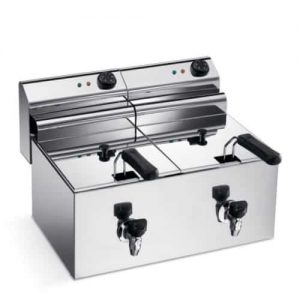 Double countertop fryer 2 × 10 liters FRI2X101.063,10 € Euro VAT excluded
Double countertop fryer 2 × 10 liters FRI2X101.063,10 € Euro VAT excluded -
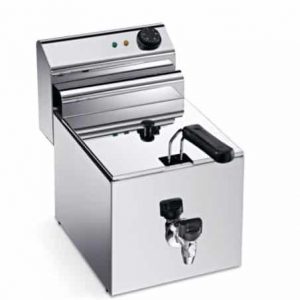 Countertop fryer 10 liters FRI10535,00 € Euro VAT excluded
Countertop fryer 10 liters FRI10535,00 € Euro VAT excluded

